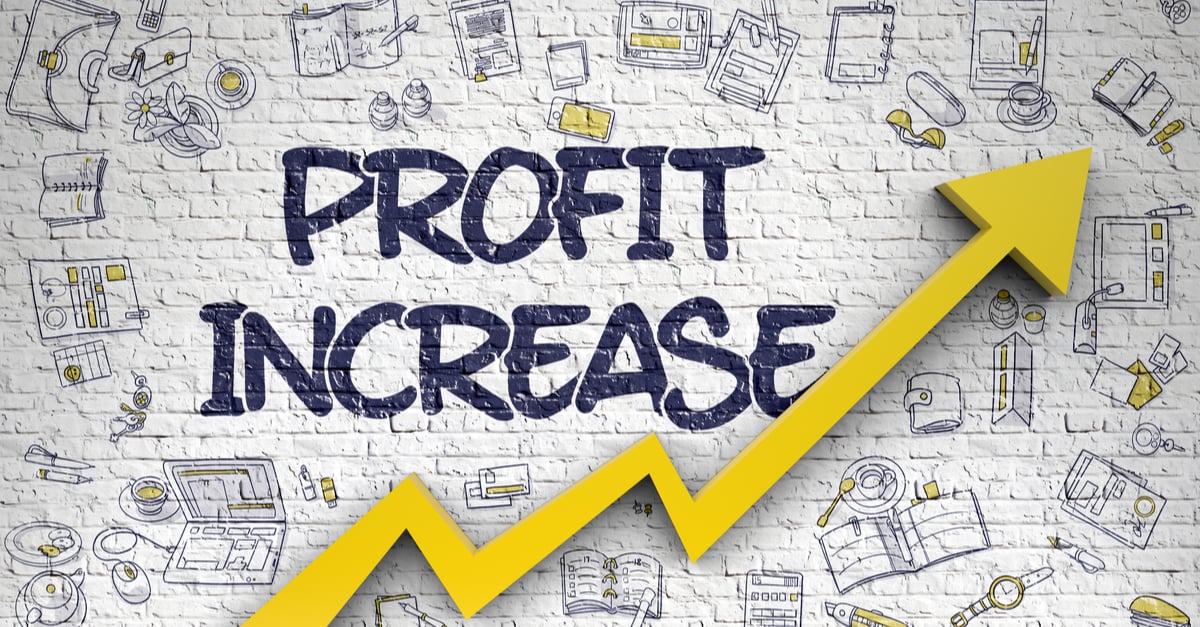Your small business is generating lots of sales. You're constantly getting new customers. Not only that, but many of them are coming back for more of your products and services. They're even recommending others to come and do business with you. So what's the problem? You're probably not keeping track of your profit margins. You may be failing to compare the total costs of running a business against your total revenue. Failing to track your profit margins may hinder the growth of your business and prevent you from maximising your overall profits. Having a high profit margin can help you grow your small business and resolve accounting issues.
Below are 10 ways you can raise your profit margins and achieve the business growth you've always envisioned:
1. KNOW YOUR GROSS PROFIT MARGIN
Before improving your profit margin, you should first know what your profit margin is so that you have an idea of how well your business is doing in terms of generating profits. Your gross profit margin represents the profit margin of a particular product or service. Look at the retail price of your product or service and subtract the costs of materials and labour used to produce it. Then, divide that by the retail price. For example, your product costs $25 and it takes $20 to make it. Your gross profit margin would be 20% ($5 divided by $25).
After calculating your gross profit margin, compare it to the industry average to see how well your business is faring compared to the competition. This will help give you a better idea of how much you need to improve. The ATO has a great resource on Small Business benchmarks.
2. ANALYSE YOUR PROFIT MARGINS
To get a general idea of your overall profit margins, calculate the gross profit margin on each of your individual products and services. Then analyse your profit margins over different business divisions, product categories, and suppliers. This will help you identify items that are generating low profits. You can stop selling low margin products and services so that you can focus more on the ones that work.
3. AVOID MARKDOWNS or discounts
If you're in retail, avoid marking down or discounting your products as this can bring your profits down significantly. Keeping a better handle on your inventory can help you avoid markdowns. Keep track of what you have on hand and know what's selling and what's not selling. This way, you won't have to markdown your prices in order to get rid of a product.
4. INCREASE PRICES
Just as avoiding markdowns can boost your profits, so can increasing your prices. Consider standard price increases to bring in more revenue. If you don't want to increase prices across the board, you can raise the price of some of your products and services. Look at some of the items that are popular and selling. High-selling products will likely still sale even if you raised the price on them. Also, when looking at your prices, make sure they match supplier price rises and that they're keeping up with your competition.
5. LIMIT DISCOUNTS
Discounting can be a great way to increase customer base. But if you aren't smart about it, discounting can badly destroy your margins. When you do discount your products by a certain percentage, make sure you're taking into account the percentage in sales you need in order to produce a good profit.
6. PREVENT THEFT
If you operate a retail store, theft can be a problem, especially if you lack appropriate security measures such as anti-shoplifting or theft prevention systems. Whether it's merchandise or money that is stolen, theft can make you lose profit.
7. INCREASE STAFF PRODUCTIVITY
If you can increase the productivity of your existing staff, you can boost your profits significantly. By motivating your team to do more and implementing hiring and training best practices, you can improve customer service and increase sales.
8. ELIMINATE WASTE
To make the most of your profit, you want to get more done with the resources you have. You may be utilising your staff inefficiently or your stockroom may be packed with slow-moving, expired, or discontinued inventory. Whatever the case, you could be wasting money on unused resources. Stock control is a great way to streamline your business and improve cash flow.
Waste in hospitality can also be a big problem. Is your inventory spoiling? is 25% of your food going into the bin in the kitchen?
9. INCREASE YOUR AVERAGE ORDER VALUE
Whether you have a company website or a brick-and-mortar location, you can improve your profits by increasing your average order value (AOV). To do this, you can upsell and cross-sell so that customers increase their basket or cart size by getting more items. You can also encourage impulse buys at checkout and promote your most profitable products in high-traffic areas.
10. IMPROVE SUPPLIER RELATIONSHIPS
You can negotiate better contracts with your suppliers to reduce the cost of goods. You can also build stronger relationships with them by working together to help each other become more profitable. Have a discussion with your vendors to discover ways to make things easier and more cost-effective not only for them, but for you as well.
At Eye on Books, we focus on more than "just doing your books". We improve your business and help you improve your profits. If you'd like further information, book a coffee with us today. You can also check out other posts in our blog library.




















